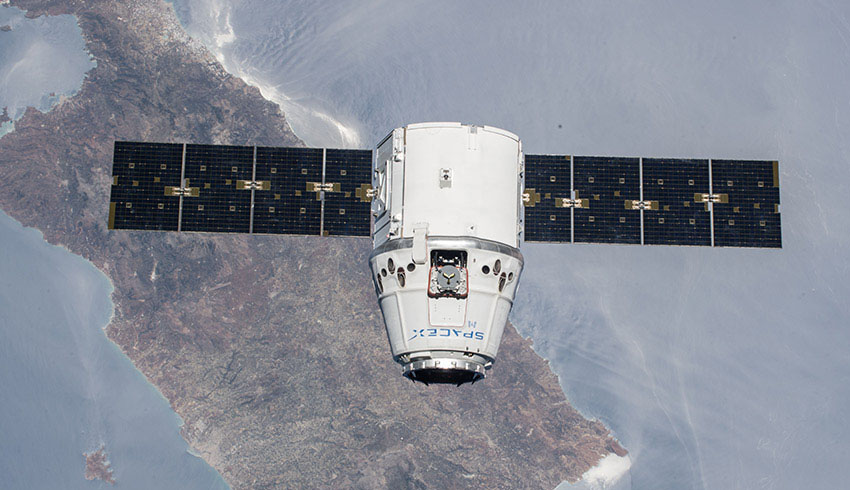Dragon was filled with 2.5 tonnes of supplies and payloads, including materials that will provide critical support to over 250 science and research investigations that will occur onboard the orbiting laboratory.
Among the research it will support is:
- The Global Ecosystem Dynamics Investigation (GEDI) will provide high-quality laser ranging observations of the Earth’s forests and topography required to advance the understanding of important carbon and water cycling processes, biodiversity and habitat. GEDI will be mounted on the Japanese Experiment Module’s Exposed Facility and provide the first high-resolution observations of forest vertical structure at a global scale. These observations will quantify the above-ground carbon stored in vegetation and changes that result from vegetation disturbance and recovery, the potential for forests to sequester carbon in the future, and habitat structure and its influence on habitat quality and biodiversity.
- A small satellite deployment mechanism, called SlingShot, will be ride up in Dragon and then be installed in a Northrop Grumman Cygnus spacecraft prior to its departure from the space station. SlingShot can accommodate as many as 18 CubeSats of any format. After the Cygnus cargo ship departs from the station, the spacecraft navigates to an altitude of 450 to 50 kilometres (an orbit higher than that of the space station) to deploy the satellites.
- Robotic Refueling Mission-3 (RRM3) will demonstrate the first transfer and long-term storage of liquid methane, a cryogenic fluid, in microgravity. The ability to replenish and store cryogenic fluids, which can function as a fuel or coolant, will help enable long duration journeys to destinations such as the moon and Mars.
- Growth of Large, Perfect Protein Crystals for Neutron Crystallography (Perfect Crystals) crystallises an antioxidant protein found inside the human body to analyse its shape. This research may shed light on how the protein helps protect the human body from ionising radiation and oxidants created as a byproduct of metabolism. For best results, analysis requires large crystals with minimal imperfections, which are more easily produced in the microgravity environment of the space station.
It is the 16th contracted commercial resupply mission from SpaceX.
Dragon is scheduled to depart the ISS in January 2019, and will return to Earth with nearly two tonnes of research, hardware and crew supplies.

